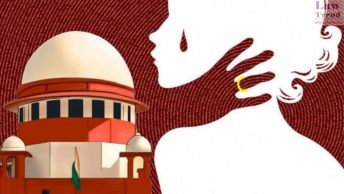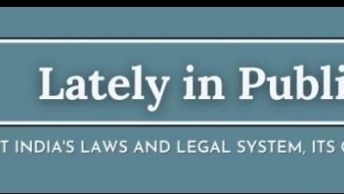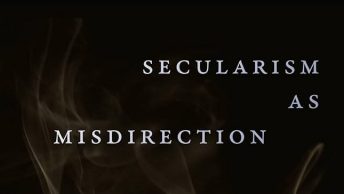By Arushi Garg
Judges of the Supreme Court of India (1950-1989) by George H. Gadbois, Jr.,(OUP, 2011) seeks to study the background and life of the ninety three judges who were elevated to the Supreme Court from 1950 to 1989. The book, in its two parts, seeks to achieve the following-first, to present a brief sketch of the lives of each of the judges, and second, to paint a collective portrait.
Sure enough, the aims of the book have been modestly defined, and the boundaries strictly drawn. The author seeks to provide biographical essays, and consider why or why not the elevation of some judges was carried through, but others were not. This is followed by his “collective portrait.” Judges have been grouped according to who the Chief Justice was, at the time of their appointment. The judges are also broadly divided into two ‘generations’ (from 1950 to 1970 and from 1970 to 1989), mainly because of the perceived increase in the role of the executive in the appointment of judges post-1970. The methodology that was followed by the author was either interviewing the judges themselves, or their family. Reliance was placed on Supreme Court files, as well as the Supreme Court Reporter.
Indeed, the sources referred to by the author set this book apart. The records he gained access to during the course of his research are not available to the public. Justice AN Ray granted to him, the only interview he ever gave to anyone. The book therefore contains a more complete account of events than is likely to be found compiled in many other places.
But at the very beginning, Gadbois specifies that his aim is to provide the “life experiences, professional and otherwise” that have socialized the judges whose lives he has studied. The idea behind doing this is to examine how these backgrounds and life experiences have shaped the personalities of these judges. By the end of the book, the reader is left with a list of the achievements, degrees and often publications of these judges, but rarely an examination of how these may have moulded each one of them.. The book is undoubtedly useful in the sense of being a collection of biographical notes, but this is hardly something one would hope to study in a vacuum, divorced from the real impact this has had on the jurisprudence of Indian courts.
It is likely that this restraint is deliberate. Gadbois himself admits that he means this book to be only a kind of reference book. But he does go on to analyse the similarities and differences among these judges; he only chooses to be selective in his analysis. So he talks about the second generation of Indians being more “Indian” in the outlook they brought to Delhi than the first generation and attributes this difference to the fact that the latter were mostly educated in the West. But he does not talk about the impact of other sensitive characteristics. For instance, he does not offer any comment on what ramifications the essentially Hindu (and mostly Brahmin) composition of the Court might have had on the judicial outlook. When he talks about 40% of the judges studied by him being sons of lawyers and judges, he refrains from discussing the possibility of nepotism.
Perhaps in his gratitude for all the information provided by the judges he interviewed, Gadbois has been generous in his adulation, where deserved, but silent on the criticism. By way of example, his discussion on Justice P.N. Bhagwati contains one stray reference to the adulatory letter written by him to Indira Gandhi on her re-election, and that is also prefaced with a remark about how controversy seemed to have followed the revered judge everywhere. Other authors have not been this polite.
He starts his book with the disclaimer that it is not meant to be an “exposé” and then seems to go out of his way to make sure he stays within the lines.
It is refreshing to see someone who wants to turn down the sensationalism, but it would have been even more refreshing to break away from the dearth of sociological studies on the lives of these judges that has been lamented time and again in Indian scholarship.
In terms of being a “who’s who” of the judges studied, the book is instructive. It contains a useful summary of the life of these judges and, given the lack of biographical data that has impeded a more detailed examination of the composition of the Supreme Court, this fills in many gaps. As the author himself concedes, “this is the first, not the last word.” Unfortunately, this concession seems more like an excuse for avoiding controversy through linkages that might have otherwise made the book seem more complete. As of now, it remains more informative than insightful.








